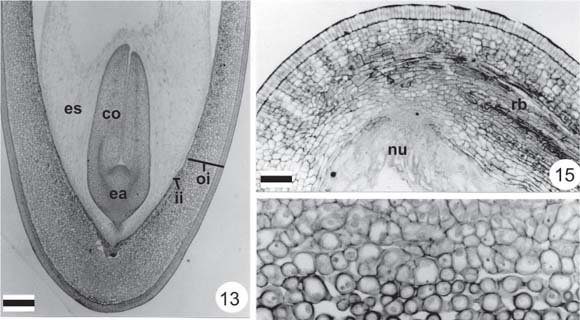The aim of this study was to describe the anatomy and ontogeny of Pterodon emarginatus seed using the usual techniques. The ovules are campilotropous, crassinucelate, and bitegmic. The following processes occur during integument development: anticlinal divisions and phenolic compound accumulations in the exotesta, whose cells become palisade; predominantly periclinal divisions and cell expansion in the mesotesta, where the rapheal bundle differentiates; differentiation of the hourglass-cell layer adjacent to the palisade; fusion of outer and inner integuments, which remain individualized structures only at the micropylar end; and intense pectin impregnation in the mesotesta thicker walls with lignification restricted to the xylem. At the hilar pole, the Faboideae seed characteristic structure develops, with double palisade layer, subhilar parenchyma, and tracheid bar. The younger nucellus shows thicker pectic cell walls and is consumed during seed formation. The endosperm is nuclear and, after cellularization, shows peripheral cells with dense lipid content; the seeds are albuminous. The axial embryo shows fleshy cotyledons, which accumulate lipid and protein reserves; starch is rare. Although the seed structure is characteristic of the Fabaceae, the inner integument coalesces into the outer integument without being reabsorbed.
cerrado vegetation; Fabaceae; Pterodon emarginatus; seed anatomy; seed-coat














